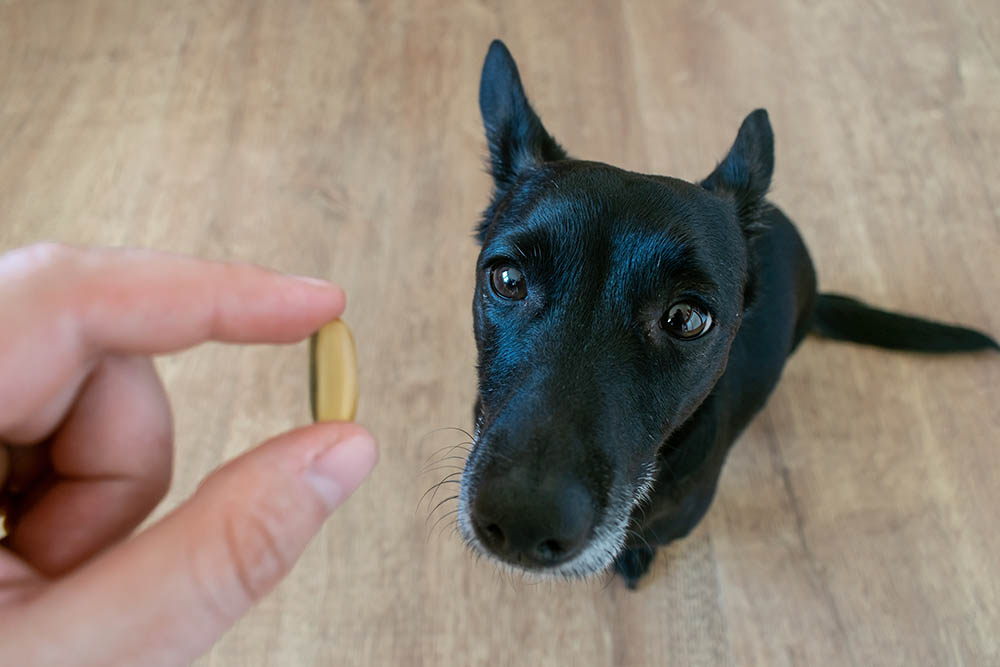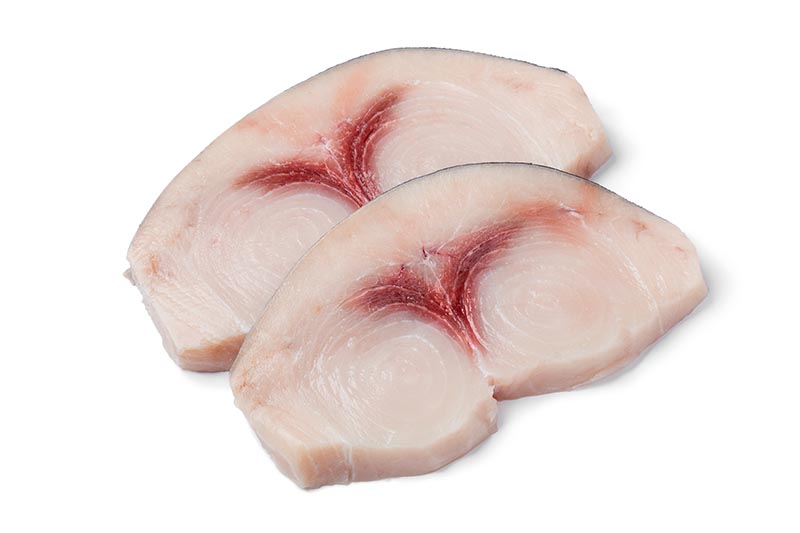Click Below to Skip Ahead
Though fish is most commonly associated with cats, many dogs love it, too. If your dog goes bonkers for a fishy treat, they’re in luck—in most cases, dogs can safely eat certain types of fish as long as they’re prepared boneless and without cooking oils or seasonings like salt and butter. That said, not every type of fish is safe for dogs, so it’s essential to know what to avoid.
In this post, we’ll explore the health benefits of fish for dogs, how to prepare fish, and which types of fish are safe and unsafe. We’ll also share information about fish allergies in dogs.
Health Benefits of Fish for Dogs
When correctly prepared, fish is very healthy for dogs because it doesn’t contain much saturated fat, is high in protein, and is easy to digest. It’s also packed with omega-3 fatty acids, which benefit the brain, eyes, coat, skin, and joints. Omega-3 is sometimes offered in supplement form to support dogs suffering from osteoarthritis, inflammatory bowel disease, and kidney disease.
For these reasons, fish is a common protein in commercial dog food formulas. It’s sometimes offered as an alternative for dogs with allergies to other meats, such as chicken, lamb, or beef.

Safe Types of Fish for Dogs
In dog food formulas containing fish, you’re more likely to find smaller or shorter-lived fish species because longer-lived fish have a greater risk of higher levels of mercury—which can cause heavy metal toxicity. But that doesn’t mean that small amounts of these types of fish can’t be safe. Fish that are generally safe for dogs to eat include:
- Salmon
- Arctic char
- Whitefish
- Cod
- Flounder
- Canned light tuna (in spring water)
- Catfish
- Herring
- Walleye
- Whiting
Feed with Caution
Certain types of fish are generally safe as long as special care is taken when it comes to selecting the type you’ll feed to your dog. Water-packed sardines without added salt, seasonings, or sauces, for example, are fine for dogs to eat in moderation. That said, they do contain bones and, though these are typically small, they may present a choking hazard or the potential for an intestinal obstruction.
Some people do feed sardines with the bones to their dogs due to the bones’ small size, but you might have more peace of mind if you cut the sardines into small pieces and remove the bones before offering them to your dog. It’s also prudent to remember that canned sardines are high in salt, which is another reason why they should be fed in moderation only.
Tilapia is another example of fish to feed with caution. This type of fish is farm-raised (more on this in the next section), so you should only go for tilapia with Global Seafood Alliance or Aquaculture Stewardship Council certification. Moreover, tilapia should only be offered if it’s been thoroughly cleaned, skinned, deboned, and cooked.

Unsafe Types of Fish for Dogs
Certain types of fish are unsafe for dogs due to the possibility of their bodies containing high mercury levels and parasites. Farm-raised fish—especially from areas with a lack of regulation—may come with extra risks, including containing antibiotic residue and various toxins. The following types of fish are best avoided:
- King mackerel
- Tuna
- Tilefish
- Shark
- Swordfish
Frequently Asked Questions
What About Raw Fish?
From 2010 to 2012, the FDA Center for Veterinary Medicine (CVM) conducted a study on raw pet foods and found that Salmonella was present in 15 out of 196 raw food samples. Listeria monocytogenes were present in 32 samples.
On that basis, it’s not recommended to feed raw fish to your dog as it’s more likely to contain harmful bacteria or parasites. Raw foods containing harmful bacteria and parasites can be dangerous to your dog, to you, and other family members.
Can Dogs Have Fish Oil?
Fish oil can have many benefits for dogs. However, it’s best to check this with your vet first to make sure your dog gets the right dosage and type of fish oil for their needs. Fish oil contains omega-3 fatty acids, which, as mentioned above, are beneficial for various areas of health, including skin, coat, joint, eye, and brain health.

How Should Fish Be Prepared for Dogs?
If you feed fresh fish to your dog, you’ll need to ensure it’s thoroughly cleaned, skinned, and deboned. The head, skin, fins, and tail should be removed. Grilling and steaming are the best methods of cooking fish for dogs, and no salt, seasonings, sauces, or unhealthy oils should be added during the cooking process.
Certain foods that are sometimes cooked with fish, including butter, are very bad for dogs and can cause serious stomach upset or even pancreatitis. Some foods, like garlic, are downright toxic to dogs. This is why fish should always be offered plain.
How Much Fish Can My Dog Have?
If your dog’s regular commercial formula contains fish, your dog may already be eating fish on a daily basis. If you prepare fish at home for your dog and offer it in addition to your dog’s standard formula, it should typically only be given as an occasional tasty treat to keep from overdoing it.
In some cases, a vet might recommend feeding fish more regularly, either because they need a special kind of diet or support for certain health conditions, like arthritis. If you’re not sure how much fish would be ideal for your dog, please consult your vet.

Can Dogs Be Allergic to Fish?
Yes, although a fish allergy is quite rare in dogs—chicken, beef, dairy, chicken egg, wheat gluten, and soy allergies are more common. Signs of a food allergy include vomiting, diarrhea, and itchy skin. Your dog may lick or scratch themselves frequently if their skin is itchy, so watch out for this behavior. In some cases, dogs with allergies lose weight and/or experience lethargy or hyperactivity.
Final Thoughts
As long as your dog doesn’t suffer from a fish allergy or sensitivity, they can eat certain varieties of fish that have been appropriately prepared. However, as with any kind of food that is supplemental to your dog’s standard food formula, moderation is key, especially for keeping conditions like obesity at bay. If you have any questions about feeding fish to your dog, please reach out to a veterinary professional.
See also:
- Can Dogs Eat Fortune Cookies? Vet-Reviewed Nutrition Facts & FAQ
- Can Dogs Eat Tuna? Vet-Verified Health & Nutrition Facts
Featured Image Credit: Pixabay











